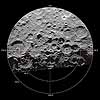| . |  |
. |
Beijing - Apr 13, 2004 China has decided to use a Long March 3A carrier rocket to launch the satellite in its lunar probe project, said sources with the China Academy of Launch Vehicle Technology (CALT). The Long March 3 A was chosen for this mission because it enjoys the highest success rate among the Long March series of launch vehicles, according to the CALT. Cen Zheng, chief commander of Long March 3A, said that some technological improvements need to be made to this type of carrierrocket so as to meet the demands of the lunar probe satellite for a successful launch. The rocket, improvements of which expected to be completed in two years, is now being further developed and some modules and itsmain body have been put into production. China's lunar probe project, also known as the Chang'e Program,referring to a goddess who reached the moon in an ancient Chinese fairy tale, will be divided into three phases. The first phase of the program, with funding of 1.4 billion yuan (about 170 million US dollars), has got underway for sending a satellite to orbit the moon by 2007. It would be followed by the landing of an unmanned vehicle on the moon in the second stage by 2010 and collecting samples of lunar soil with an unmanned vehicle by 2020 in the third phase. The satellite would obtain three-dimensional images of the lunar surface, analyze the content of useful elements and materials, and probe the depth of the lunar soil and the space environment between the earth and the moon. Source: Xinhua News Agency Related Links SpaceDaily Search SpaceDaily Subscribe To SpaceDaily Express
 Washington - Apr 02, 2004
Washington - Apr 02, 2004The discovery of accessible deposits of water on the moon would "profoundly" affect the economics and viability of a lunar base, Cornell University astronomer Donald Campbell told a House of Representatives subcommittee today, April 1. Unfortunately, he said, recovering water deposits will not be an easy task, since they are likely to exist in the bottoms of very cold, permanently dark craters at the moon's poles. |
|
| The content herein, unless otherwise known to be public domain, are Copyright 1995-2006 - SpaceDaily.AFP and UPI Wire Stories are copyright Agence France-Presse and United Press International. ESA PortalReports are copyright European Space Agency. All NASA sourced material is public domain. Additionalcopyrights may apply in whole or part to other bona fide parties. Advertising does not imply endorsement,agreement or approval of any opinions, statements or information provided by SpaceDaily on any Web page published or hosted by SpaceDaily. Privacy Statement |